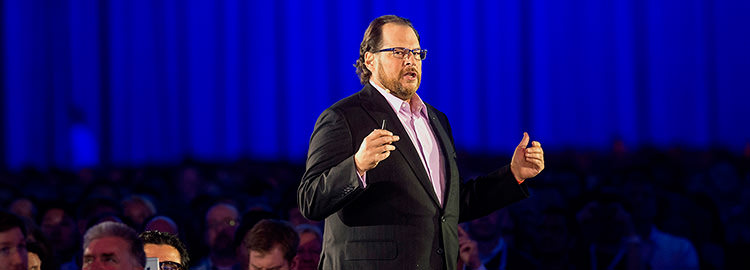

For instance, nearly every country experienced an initial “losing control” phase, where the virus took everyone by surprise. More precisely, we mapped those dimensions across the three phases of the crisis that have emerged so far. These differ hugely from place to place, of course, but nevertheless we believe that when and how any region or country reaches a next normal will generally depend on how the virus behaves there, how the economy behaves, and how people respond as a society. My team and I started by looking at the public health, economic, and socio-political dimensions of the crisis globally. How did you come up with the three scenarios? What will they want and need to build their businesses? Where are the markets going, where is regulation going? What other things will influence our environment? Scenario planning is one of the approaches we use when we look at those kinds of questions. Salesforce is a highly future-oriented company, so a big part of my role is to think about the future for our customers. Looking at the scenarios that emerge can help us make better decisions now, even in the face of uncertainties.


Rather, it looks at the pivotal forces shaping the future - the critical uncertainties, as we call them - and tries to map where they’re taking us. Scenario planning doesn’t work by simply predicting what’s going to happen next. It’s a way to help us explore possible futures, so we can make better decisions today. By highlighting the main public health, economic, and sociopolitical dimensions of the current situation and putting them into a framework of critical uncertainties, the tool outlines three broadly applicable scenarios for the next 18–36 months. Working with a team of experts, leading futurist and Salesforce’s Senior Vice President of Strategic Planning, Peter Schwartz, has created a powerful scenario-planning tool to help leaders respond to these issues. How long will the current health and economic crises last? When will we move from crisis mode and back to work in the “next normal?” What will this new reality even look like? And with companies now beginning to work through how they’ll safely re-open their workplaces, they need answers to key questions. I found his essay thoughtful and inspirational, and I commend it to you.As the COVID-19 pandemic evolves, business leaders everywhere face huge challenges as they seek to safely steer their organizations through the crisis. We are “free people, worthy of freedom, and determined not only to remain so but to help others gain their freedom as well.” And Richard notes, "That’s not a bad starting point for locating American identity in the world of 2019." “What kind of people do we think we are?” Reagan asked in 1982. Richard revisits one of great speeches from President Reagan's early years - and his reflections on it are worth reading at a time when our political and economic systems are being called into question, not just at home but around the world. This exceptional essay by Richard Fontaine, CEO of CNAS and a former senior advisor to Senator McCain, among others in government, stood out. I spent time this past weekend going through some speeches and articles from recent months.


 0 kommentar(er)
0 kommentar(er)
